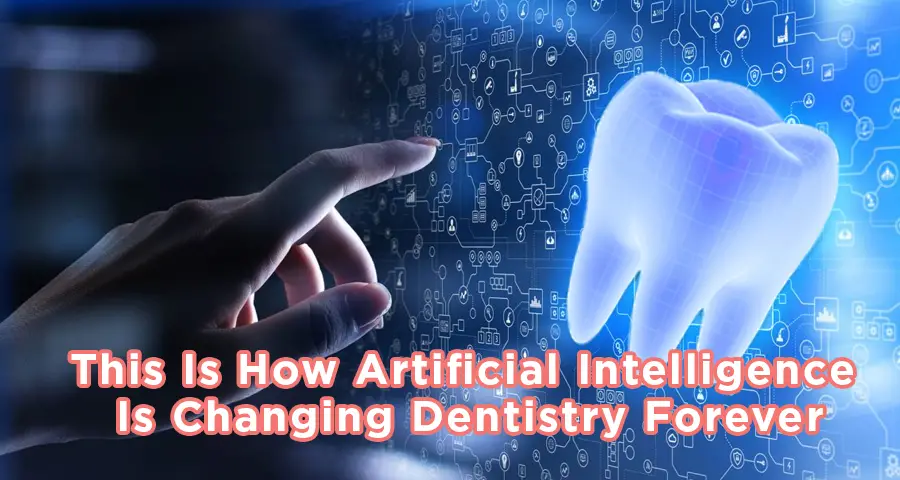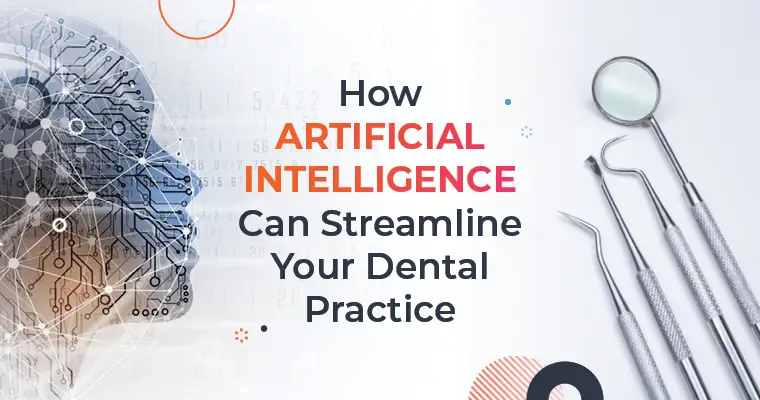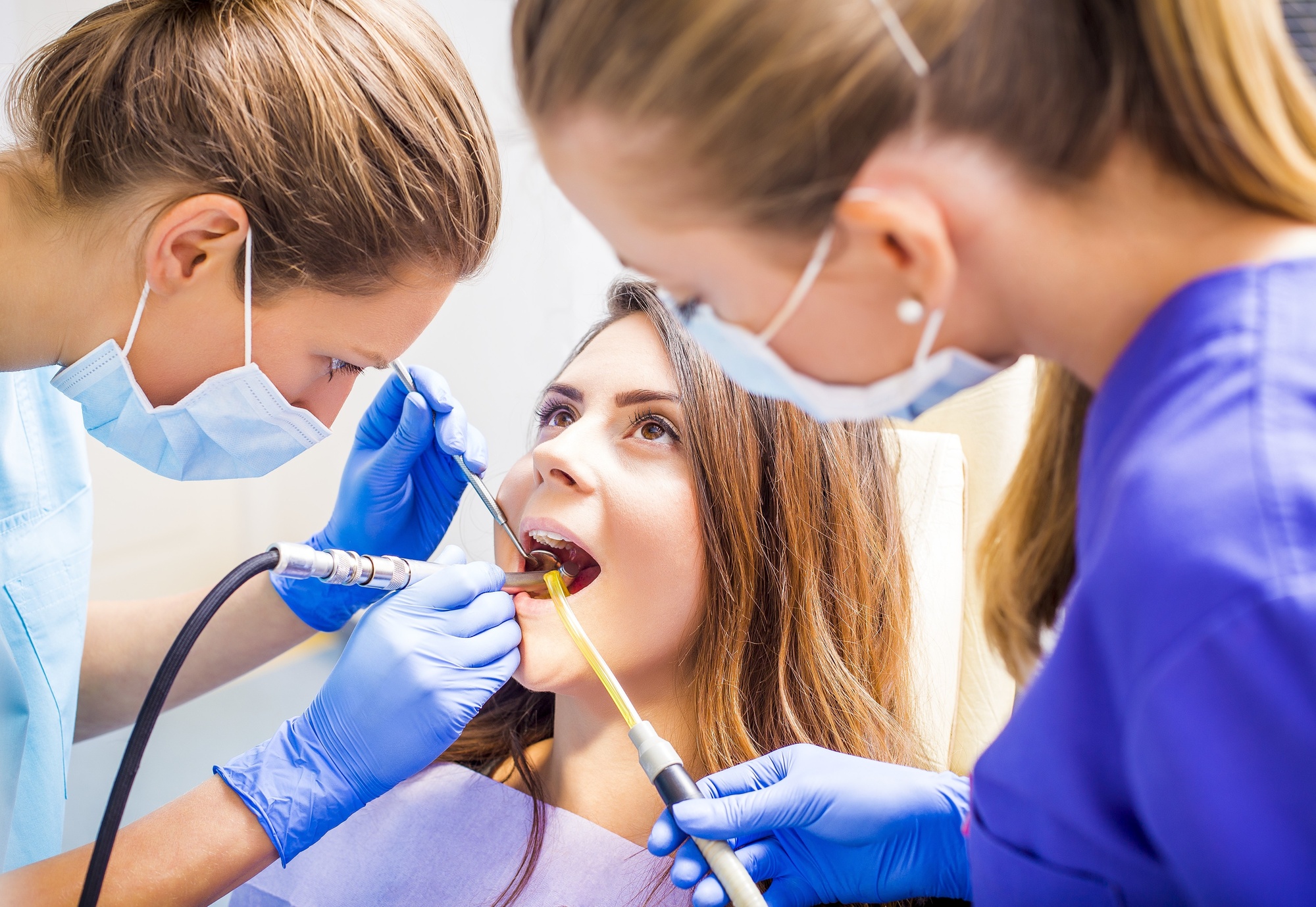AI in Dentistry: Revolutionizing Dental Care and Treatment

Artificial intelligence (AI) is rapidly revolutionizing various industries, and dentistry is no exception. AI-powered technologies are transforming dental care by enhancing diagnostic accuracy, automating administrative tasks, and providing personalized treatment plans.

Enhanced Diagnostics
AI algorithms can analyze large volumes of dental images and identify patterns that are often missed by the human eye. This enables dentists to detect cavities, gum disease, and other dental issues at an earlier stage, leading to timely intervention and better outcomes. AI assists in diagnosing complex conditions like peri-implant disease and root fractures, enhancing precision and reducing the need for invasive procedures.
Automation and Streamlined Workflow
AI can automate administrative tasks such as patient scheduling, claims processing, and insurance verification. This frees up dentists and staff to focus on providing quality patient care. AI-powered chatbots can answer common patient queries, providing quick and convenient support 24/7.
Personalized Treatment Plans
By analyzing vast amounts of data, AI can help dentists tailor treatment plans to each patient’s unique needs and risk factors. AI algorithms can predict the progression of dental disease and suggest preventive measures based on an individual’s age, medical history, and lifestyle habits. This customized approach improves outcomes and reduces the need for unnecessary interventions.
AI-Assisted Surgery
AI-powered surgical navigation systems guide dentists during complex procedures, such as implant placement and root canal treatments. These systems provide precise real-time data and visualization, enabling surgeons to perform delicate operations with increased accuracy and efficiency.
Early Detection of Oral Cancer
Oral cancer is a major health concern with poor survival rates. AI can assist in early detection by analyzing images of the oral cavity. AI algorithms can identify suspicious lesions and classify their potential malignancy, facilitating timely referral for biopsy and treatment.
Conclusion
AI is revolutionizing dental care by providing enhanced diagnostics, automating administrative tasks, and personalizing treatment plans. AI-powered technologies are empowering dentists to deliver more accurate diagnoses, streamline workflows, and improve patient outcomes. As AI continues to advance, it is poised to further enhance the field of dentistry and significantly improve the oral health of patients worldwide.## Ai In Dentistry: Revolutionizing Dental Care And Treatment
Artificial intelligence (AI) is rapidly transforming the healthcare industry, and dentistry is no exception. AI-powered technologies are being used to develop new tools and techniques that are revolutionizing the way dentists diagnose, treat, and prevent oral diseases.

Executive Summary
AI in dentistry has the potential to improve the quality, efficiency, and accessibility of dental care. AI-powered tools can be used for a wide range of applications, including:
- Diagnosis: AI algorithms can analyze dental images to identify potential problems, such as cavities, gum disease, and oral cancer.
- Treatment Planning: AI can help dentists develop personalized treatment plans by taking into account a patient’s unique needs and preferences.
- Prevention: AI can be used to identify patients at high risk of developing oral diseases and recommend preventive measures.
- Research: AI can be used to analyze large datasets to identify trends and patterns in oral health.
The adoption of AI in dentistry is still in its early stages, but the potential benefits are significant. AI has the potential to make dental care more accurate, efficient, and affordable.
Introduction
Dentistry is a complex and challenging field that requires a high level of skill and expertise. Traditional dental techniques often rely on the subjective judgment of the dentist, which can lead to errors in diagnosis and treatment. AI, on the other hand, can provide dentists with objective data and insights that can help them make more informed decisions.
FAQ
- What is AI?
AI is the simulation of human intelligence processes by machines, especially computer systems. AI enables machines to learn and improve from experience. - How is AI used in dentistry?
AI is used in dentistry in a variety of ways, including:- Diagnosis: AI algorithms can analyze dental images to identify potential problems, such as cavities, gum disease, and oral cancer.
- Treatment Planning: AI can help dentists develop personalized treatment plans by taking into account a patient’s unique needs and preferences.
- Prevention: AI can be used to identify patients at high risk of developing oral diseases and recommend preventive measures.
- Research: AI can be used to analyze large datasets to identify trends and patterns in oral health.
- What are the benefits of using AI in dentistry?
The benefits of using AI in dentistry include:- Improved accuracy: AI algorithms can analyze dental images with a high degree of accuracy, which can help dentists identify problems that may have been missed by the human eye.
- Increased efficiency: AI can help dentists automate many of the tasks that are currently performed manually, which can save time and money.
- Improved patient care: AI can be used to develop personalized treatment plans and provide patients with information about their oral health.
Top 5 Subtopics
1. AI-Powered Diagnosis
AI algorithms can analyze dental images to identify potential problems, such as cavities, gum disease, and oral cancer. This technology has the potential to improve the accuracy and efficiency of dental diagnosis.
- Automated caries detection: AI algorithms can be used to detect cavities on dental x-rays with a high degree of accuracy. This technology has the potential to reduce the need for exploratory surgery and improve the early detection of cavities.
- Periodontal disease detection: AI algorithms can be used to analyze dental images to identify signs of periodontal disease, such as inflammation and bone loss. This technology has the potential to improve the early detection and treatment of periodontal disease.
- Oral cancer detection: AI algorithms can be used to analyze dental images to identify signs of oral cancer, such as abnormal tissue growth and changes in the color or texture of the oral mucosa. This technology has the potential to improve the early detection and treatment of oral cancer.
2. AI-Assisted Treatment Planning
AI can help dentists develop personalized treatment plans by taking into account a patient’s unique needs and preferences. This technology has the potential to improve the quality and outcomes of dental treatment.
- Personalized treatment plans: AI algorithms can be used to generate personalized treatment plans that are tailored to a patient’s individual needs and preferences. This technology can help dentists choose the most appropriate treatment options and avoid unnecessary procedures.
- Predictive analytics: AI algorithms can be used to predict the likelihood of success of different treatment options. This information can help dentists make more informed decisions about the best course of treatment.
- Patient education: AI can be used to provide patients with information about their oral health and the different treatment options available. This technology can help patients make more informed decisions about their care.
3. AI-Enabled Prevention
AI can be used to identify patients at high risk of developing oral diseases and recommend preventive measures. This technology has the potential to reduce the incidence and severity of oral diseases.
- Risk assessment: AI algorithms can be used to analyze a patient’s risk of developing oral diseases based on factors such as age, gender, and oral hygiene habits. This information can help dentists identify patients who need additional preventive care.
- Personalized prevention plans: AI algorithms can be used to generate personalized prevention plans that are tailored to a patient’s individual risk factors. This technology can help dentists recommend the most appropriate preventive measures for each patient.
- Patient education: AI can be used to provide patients with information about oral diseases and the importance of prevention. This technology can help patients make lifestyle changes that can reduce their risk of developing oral diseases.
4. AI-Powered Research
AI can be used to analyze large datasets to identify trends and patterns in oral health. This technology has the potential to improve our understanding of oral diseases and develop new prevention and treatment strategies.
- Genome-wide association studies: AI algorithms can be used to identify genetic variants that are associated with an increased risk of developing oral diseases. This information can help researchers identify new targets for drug development and prevention strategies.
- Clinical trials: AI algorithms can be used to design and conduct clinical trials more efficiently and effectively. This technology can help researchers identify the most promising new treatments and accelerate the development of new therapies.
- Public health surveillance: AI algorithms can be used to monitor the incidence and prevalence of oral diseases in real-time. This information can help public health officials identify trends and develop targeted prevention programs.
5. Future of AI in Dentistry
AI is still a relatively new technology in dentistry, but it has the potential to revolutionize the field. In the future, we can expect to see AI-powered tools and techniques being used for a wide range of applications, including:
- Automated dental procedures: AI-powered robots could be used to perform routine dental procedures, such as fillings and cleanings. This technology has the potential to improve the efficiency and accuracy of dental procedures.
- Personalized dentistry: AI algorithms could be used to develop personalized treatment plans that are tailored to each patient’s individual needs. This technology has the potential to improve the quality and outcomes of dental treatment.
- Tele dentistry: AI-powered tele dentistry platforms could provide remote access to dental care for patients in underserved areas. This technology has the potential to improve access to dental care for millions of people around the world.
Conclusion
AI has the potential to revolutionize the field of dentistry. AI-powered tools and techniques can be used to improve the accuracy, efficiency, and accessibility of dental care. As AI technology continues to develop, we can expect to see even more innovative and groundbreaking applications of AI in dentistry.
Relevant Keyword Tags
- AI in Dentistry
- Dental Diagnosis
- Treatment Planning
- Prevention
- Research
